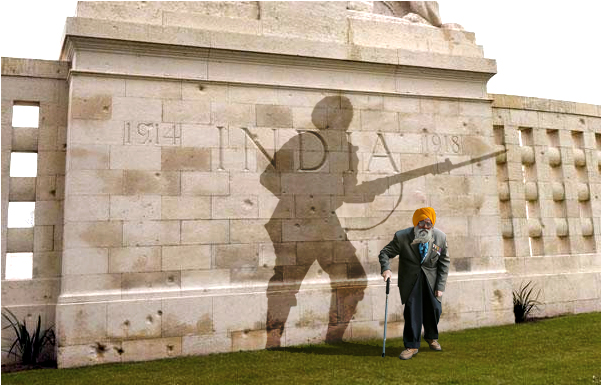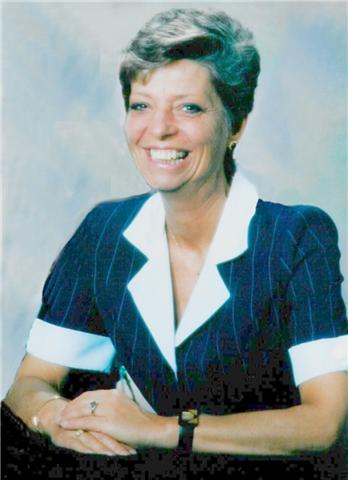
Heroes In Our Midst
The Men of The Punjab: The Heroes Within Our Midst – Revisited 2015
A decade ago I wrote an article The Men of The Punjab: The Heroes Within Our Midst celebrating the Year of the Veteran; a story that was printed in the Vancouver Sun, Nov 11th 2005. I was doing research into a completely different story about WWII and throughout that research I found the Indian Forces mentioned everywhere in articles and text books.
In the interim years since WW1 & WWII the histories of battles and engagements were, more often than not, written about by Generals and Field Marshalls in their life and military autobiographies. Armies and Battalions were rarely divided into nationalities or countries but were all grouped together as Allied troops or British Empire troops with the loss or the victory being credited to the British Empire.
It is only in recent years that we are now beginning to see war diaries and letters published, that were written by the (OR’s) other ranks; the ordinary rank and file soldier. Most of the jottings and journals are being found in musty attics or household sales, the words written in pencil on bits of faded paper and note books or in bundles of precious letters home to parents and loved ones. There are also taped interviews held in most of the Commonwealth military archives that tell the other side of the story, from the perspective of the “common soldier”. Unfortunately the Indians rarely, if ever, wrote about their experiences in the trenches, not even during WWII.
However, ask any Commonwealth or Canadian veteran about the Indian forces and you will hear the complete; stories of epic proportions of a gallant force of fighting men. The Indian Forces/the Sikhs are renowned for their valour and bravery, as indeed are the Ghurkas’. Both are highly respected by the Commonwealth Forces as being tough, brave, “get the job done,” “no-nonsense” soldiers and I have yet to meet a veteran Commonwealth soldier who would say anything contrary to that.
I am also a veteran soldier/a retired army nurse and served during the early 60’s (Vietnam for the Americans and The Cold War, Cyprus, Yemen, Aden and Malaysia for the rest of us) and as such I have heard the stories directly from the veterans of WW1 & WWII. I was told by a British RAF Veteran that during the action in Malaysia in the early 60’s (the Ghurkas’ were sent into Malaysia and resolved matters within months), that Sikhs were sent to guard the British personnel in Singapore; Family Military Quarters and Military Hospitals. The RAF Veteran who related the story to me, only just this year, said “They were all 6ft + and they is no way you would have argued with them”. I have so many stories about the reputation of the Sikhs as a fighting force it is hard to know where to begin.
I have been taken (metaphorically) by the hand and led (through their nightmares) into the horrors of the trenches by WW1 veterans and to the battle fields of WWII by men and women who were my patients. Men and women who wouldn’t discuss the war with family have related their stories to me, (an Army Nurse) during traumatic nightmares.
Many years ago I had the distinct pleasure of meeting and talking with Field Marshall – Viscount Lord William Slim: The Commander – In – Chief in the Far East – WWII (very briefly and toward the end of his life) and his attitude toward the Indians was to tell me, “You are in good company when you are with the Sikhs”
He also spoke of “coolies” being mistreated in India: being pushed aside in the streets and his reaction was “They wouldn’t dare do that to the fighting men of India; they would get badly hurt.”
Other veterans have told me that a cheer would go up through the ranks when they heard the Punjabi pipes and knew that Sikh reinforcements had arrived.
Men (veterans of The Durham Light Infantry) who fought at Imphal and on through Burma in WWII, driving the retreating Japanese troops back from the plains of India, could not praise the Indian army, and in particular the Sikhs, highly enough. They told me that they were brilliant soldiers, very brave men and many life-long friendships based on that mutual respect were forged during this time.
I lived in Surrey for many years and during that time got to know the Sikhs very well. Amongst the elderly, many bear the scars and still painful injuries inflicted on them in various wars; wounds caused by exploding mortar and grenades, by bullets and by bayonets from hand-to-hand fighting. Many of them still carry the shrapnel that pierced their bodies. They walk along the road slowly, some of them with joints ravaged by age. They have difficulty walking, often due to strokes. Their hands are stiff from arthritis. They sit in parks and community centres around Surrey laughing and telling jokes, playing cards and enjoying a sunny day and each other’s company. They talk about such mundane things as rising prices and their pensions.
And as with any gathering of ex-servicemen, they swap stories about their time in uniform. They have white hair and beards, and they wear turbans. These are the Men of the Punjab, and the heroes within our midst.
It was with a great deal of sadness that in 2005 I attended the Candle-lit Vigil for the three elderly Sikhs who were beaten in Bear Creek Park and who subsequently died of their injuries. I was angry and deeply troubled at the time, that I was one among a handful of “white” faces in the crowds of Sikhs who had gathered to pay their respects.
We residents of Surrey should have all been outraged about that incident; to know that our elderly Canadians (irrespective of ethnic group) were not safe, meeting and chatting on a sunny day in our largest park in the centre of the City of Surrey.
As a retired educator this says to me that Canadians, irrespective of their differing ethnic backgrounds, need to learn our common history in school. We all need to know that as a race we have stood together in time of War and trouble and have been more than glad to have other Canadians of those different ethnic back grounds standing firmly within the Canadian people defending our constitution and the maple leaf.
As Pierre Berton points out very bluntly in his famous book ” Vimy ” (p. 16)
“The Corps with its four Canadian divisions was remarkable in its homogeneity. In an Army where divisions were shuttled about like chess men, the Canadians had stuck together enjoying an esprit that was not possible for other British corps. They had been gassed at Ypres and bloodied on the Somme, and the shoulder badge “CANADA” had made them all brothers, no matter what their language or region”
The Men of The Punjab were alongside them in this brotherhood, supporting the Canadian Corps throughout WW1, fighting with equal ferocity and valor, and under the same miserable situation: freezing cold, mud as thick as syrup, dead and wounded all around. The Indians suffered all the deprivations, alongside the Canadian Corps holding the front lines in among the horrors of chlorine gas attacks, when death was at every turn and twist of the battlefields, No Man’s Land and even in the huge craters that filled with chlorine gas. When gas was released ….there was nowhere to hide.
I have also defended the wearing of turbans over the past few decades: defence that wasn’t a popular stance to take at that time. During WW1, the commonest cause of death sustained by soldiers in the trenches was a head injury from German snipers. However as an army nurse, I had/have seen a bullet hole that had burned its way through the thick cloth of the turban: A head shot cushioned by the turban, leaving the Sikh soldier otherwise uninjured. By contrast, his allied comrade would probably have died as that same bullet would have penetrated the War Office issue tin helmet.
I have a unique friendship with the Indians and in particular with the Sikhs in both Britain and Canada during my lifetime and they have been (and are) loyal and staunch friends. I have listened to the naysayers over the years and as allied veterans and Royal Canadian Legion members we (of all people) need to stand shoulder to shoulder; firmly positioned alongside our Indo/Canadian veterans in this, the centennial of the First World War. Today, as we mark the 100th anniversary of Canada’s first major action in the First World War, we must remember the 2nd Battle of Ypres as the first step towards forging a nation and that the men of Punjab stood staunchly beside us through the infamous gas attacks.
The veterans of WWII are disappearing rapidly and therefore I suggest that as European descended Canadians we stretch out our hands; talk to the Indians; to the Sikhs and you will find the people that I know. They are our brothers, our colleagues and fellow Canadians and I give them the respect and honour they have more than earned in the past 100 years; a respect that I feel, personally, is long overdue.
Retd. Prof. Janet Wells Kaur Vickers-Robertson
Awarded: Minister of Veterans Affairs – Commendation 2012
- SRN (UK 1966)
- SCM (UK 1968)
- Central Midwives Board; Approved Licensed Teaching/Training Midwife (UK 1972)
- Member: Indian Ex-Servicemen Society of British Columbia
- Ordinary Member: Royal Canadian Legion: Branch 94 – Quesnel.
Queen Alexandra’s Royal Army Nursing Corps (Ret). Awarded Nurse of the Year for the Armed Forces 1966
MA (Education – SFU 1995)



